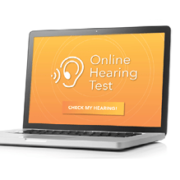Get That Gym Workout — Without Hurting Your Ears | Protecting Your Hearing
Making Moves — and Protecting Your Hearing, Too
Planning to bust some moves at the gym as part of your 2019 goals? You’re not alone. As a tried-and-true strategy for losing weight, feeling more fit, or simply stepping up physical activity for overall wellness, working out is a perennially popular New Year’s resolution, and exercise classes can be a fun way to fit the bill.
The catch? Whether it’s cycling, kickboxing, step aerobics, dance, or another high-energy track, these classes often crank up the music to harmful levels — well above the danger threshold of 85 decibels — giving your ears a workout you didn’t bargain for. It can lead to instant or gradual hearing loss that could be permanent.
To protect your hearing while getting into the exercise groove, here are four things you can do:
Speak Up
Turning down the volume in the first place goes a long way toward reducing the risk of noise-induced hearing loss. If the music seems too loud, consider asking the instructor before class begins or during a cool-down break to lower the volume. Better yet, explore different gyms and fitness studios and their approach to noise management before choosing the facility for your needs.
Wear Earplugs
Keeping earplugs in your car or gym bag helps ensure you’ll have a pair on hand. They’re small enough to fit in your ear but effective enough to help soften the loudest sounds while still allowing you to hear. Inexpensive varieties are available at most pharmacies. Consider a customized set from your local audiologist to help ensure a secure fit during high-intensity exercise.
Keep Your Distance
The closer you are to the sound source, the bigger the burden on your ears, so try to pick a spot as far away from the speakers as possible. That can be harder to do in a smaller room — especially if speakers are along the wall and the ceiling, too — but every bit of space between you and the epicenter of the noise can make a difference.
Take a Break
Keeping your noise exposure to 15 minutes or less amid 100-plus decibel levels and no more than a minute amid 110-plus decibel levels — per public-health recommendations — might seem a tall order during your favorite aerobics session. Frequent or prolonged noise exposure, however, increases the chance of lifelong hearing damage, so consider leaving class for a water break or an alternate activity during the loudest moments.




 Proudly Canadian and Independently Owned and Operated
Proudly Canadian and Independently Owned and Operated 

